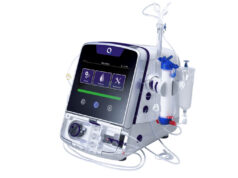 Fist Assist Devices has announced that data associated with the p-FACT cohort, a subset of the recently completed, non-significant risk Fist Assist clinical trial (FACT trial) that focused on vein dilation in stage four patients with chronic renal failure, show clear evidence that the Fist Assist device dilates the perforator vein.
Fist Assist Devices has announced that data associated with the p-FACT cohort, a subset of the recently completed, non-significant risk Fist Assist clinical trial (FACT trial) that focused on vein dilation in stage four patients with chronic renal failure, show clear evidence that the Fist Assist device dilates the perforator vein.
The p-FACT data derived from the FACT trial evaluated the use the FA-1 device developed by Fist Assist Devices, a novel, intermittent pneumatic compression device, to promote superficial vein dilation in patients with chronic kidney disease to enable creation of all types of arteriovenous fistulas (AVFs) and to ensure the safety of the device in this patient population.
“We are thrilled to announce the results of the p-FACT data. The statistically significant data, with a p value of <0.05, shows that the FA-1 device clearly dilates the perforator vein in stage four chronic renal failure patients” said Tej Singh, chief executive officer and founder of Fist Assist Devices.
“These are very important data as they not only show that the FA-1 device is safe, but also demonstrate that intermittent pneumatic pressure dilates superficial veins including, most importantly, the perforator vein needed for endoAVF success. Condition of the perforator vein is critical for endoAVF planning, and we can now show without a doubt that the Fist Assist FA-1 device can dilate that clinically important vein and have a key role in endoAVF consideration and planning!”
“These are revolutionary data for the ESRD [end-stage renal disease] community, namely the patients, physicians, and companies associated with endoAVF procedures” said FACT investigator John Lucas (Greenwood Leflore Hospital, Greenwood, USA).
“Larger veins not only make vascular access surgery easier and more likely to succeed, but a larger, dilated perforator vein is essential for the endoAVF to mature properly. Both endoAVF technologies presently approved and available for treatment of ESRD utilise the perforator vein as a key component of the procedure. The statistically significant p-FACT data demonstrate that intermittent compression results in a larger perforator vein for stage four patients. Based on the FACT trial p-FACT data, almost every stage four renal disease patient planning to have having an endoAVF procedure should consider using the FA-1 device in preparation for their procedure. Larger veins, especially the perforator vein, will surely improve outcomes! This is very exciting data for all patients and the global ESRD community.”












